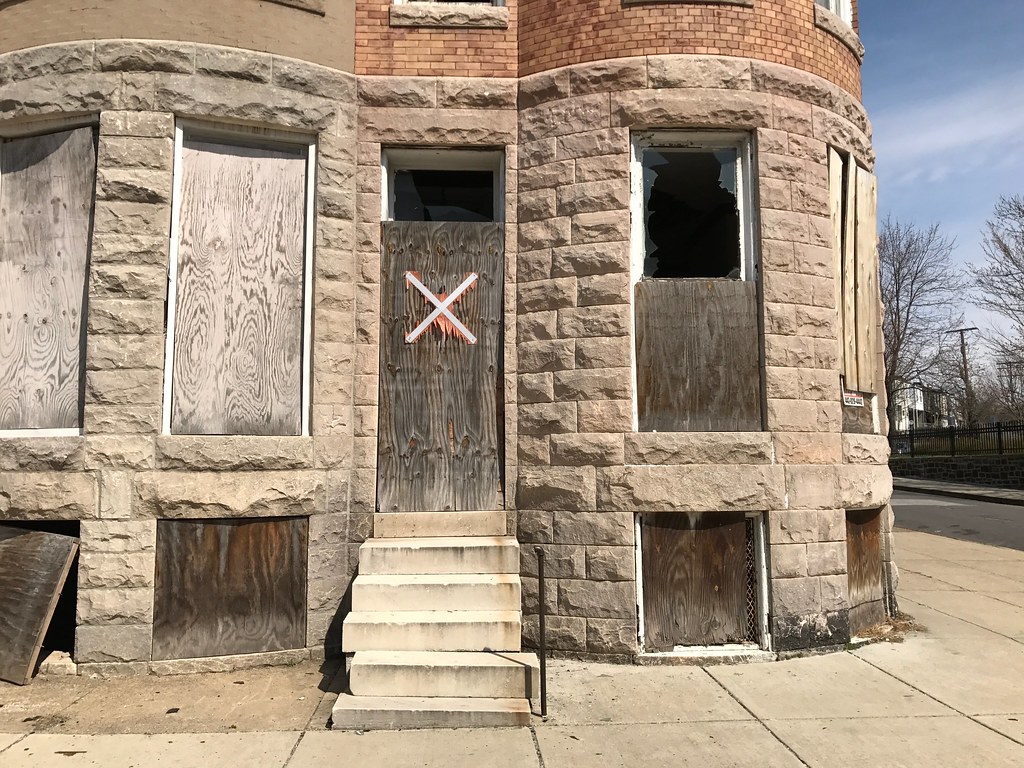Baltimore has a lot of vacant buildings. Depending on how you count, the total ranges between sixteen thousand and thirty-two thousand vacant buildings—mostly brick rowhouses built before World War II. You won’t find vacant houses in every neighborhood. In the neighborhoods like Hampden, Remington and Medfield, where most residents are white, less than 1% of homes are vacant—around sixty buildings in 2014. In the neighborhoods of Sandtown-Winchester and Harlem Park, where most residents are black, over one-third of residential properties are vacant—more than two thousand buildings in 2014.
Counting vacant buildings depends on how you define a vacant building. All unoccupied buildings are not “vacant” by any definition. But many local housing advocates are concerned that the number of vacant building notices on the city’s list is much less than the true total of abandoned buildings in Baltimore.
How does Baltimore define a “vacant building”?
Different cities use different definitions of what qualifies as a “vacant building.” Having a clear definition is important for anyone who wants to count the number of vacant buildings in Baltimore.
Is every unoccupied home a vacant building? No. For example, a home might be unoccupied during a major renovation. If a property owner dies without a will, a building may sit empty while a court decides who it belongs to.
Is every home that causes problems for neighbors a vacant building? Not really. An overgrown lawn or trash-littered property might be a bother or a hazard even if the house is occupied by an owner or tenant.
If a building is unoccupied and…
- Unsafe or unfit for people to live or work inside the building, or
- Has two code violations that have not been fixed, or
- Has six code violations in the past year
…then the building meets the definition of a vacant building in Baltimore City.
Even if a building stands unoccupied for an long period of time, Baltimore Housing does not consider the building “vacant” until it meets these criteria and the city issues a vacant building notice (also known as “VBN”). This official definition appears in Section 116.4 of the Building, Fire and Related Codes of Baltimore City. Article 13, Subtitle 11 of the Baltimore City Code gives the definition of a vacant lot. Vacant lots and vacant buildings are both vacant property.
Since the 1970s, Baltimore’s Code Enforcement office has maintained a “Vacant House File” as a database on the city’s computer system. Since the early 2000s, this data has been available in real-time to city staff and, since 2011, it has been available to residents and researchers on the Open Baltimore data portal.
How many vacant buildings does Baltimore have?
Today, Baltimore Housing reports that the city has more than 16,000 vacant buildings and 14,000 vacant lots for a total of around 30,000 vacant properties. More than 75% of all vacant property in Baltimore City is privately owned. But if you use a different definition of vacant buildings you might come up with a different number. The U.S. Census Bureau counts vacant dwelling units coming up with 46,782 (2010). Baltimore Neighborhood Indicators Alliance made an estimate in 2015 based on both city and Census Bureau criteria of 31,370.
| Who is counting? | What are they counting? | How many did they count? |
|---|---|---|
| Baltimore Housing | Vacant building notices (2014) | 16,636 |
| U.S. Census Bureau | Vacant dwelling units (2010) | 46,782 |
| Baltimore Neighborhood Indicators Alliance | Estimate of vacant buildings based on both city and Census Bureau criteria (2015) | 31,370 |
A 2015 report on Vacants to Value from the Abell Foundation, notes that some advocates are “concerned that Baltimore Housing’s metric undercounts the number of vacant properties and thus understates the city’s vacancy problem.” In 2014, volunteers with Housing Our Neighbors (HON), surveyed unoccupied houses in McElderry Park and Middle East by walking each block in these neighborhoods, talking to residents, and using a checklist to decide what houses were vacant. HON counted 381 vacant buildings including 159 (41.7%) buildings where Baltimore Housing had not assigned a vacant building notice (VBN).
